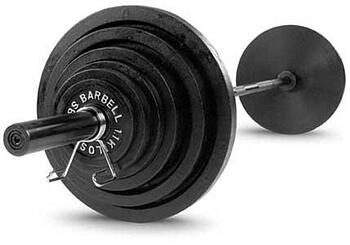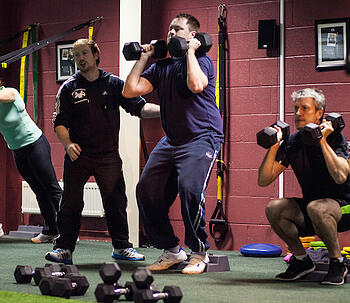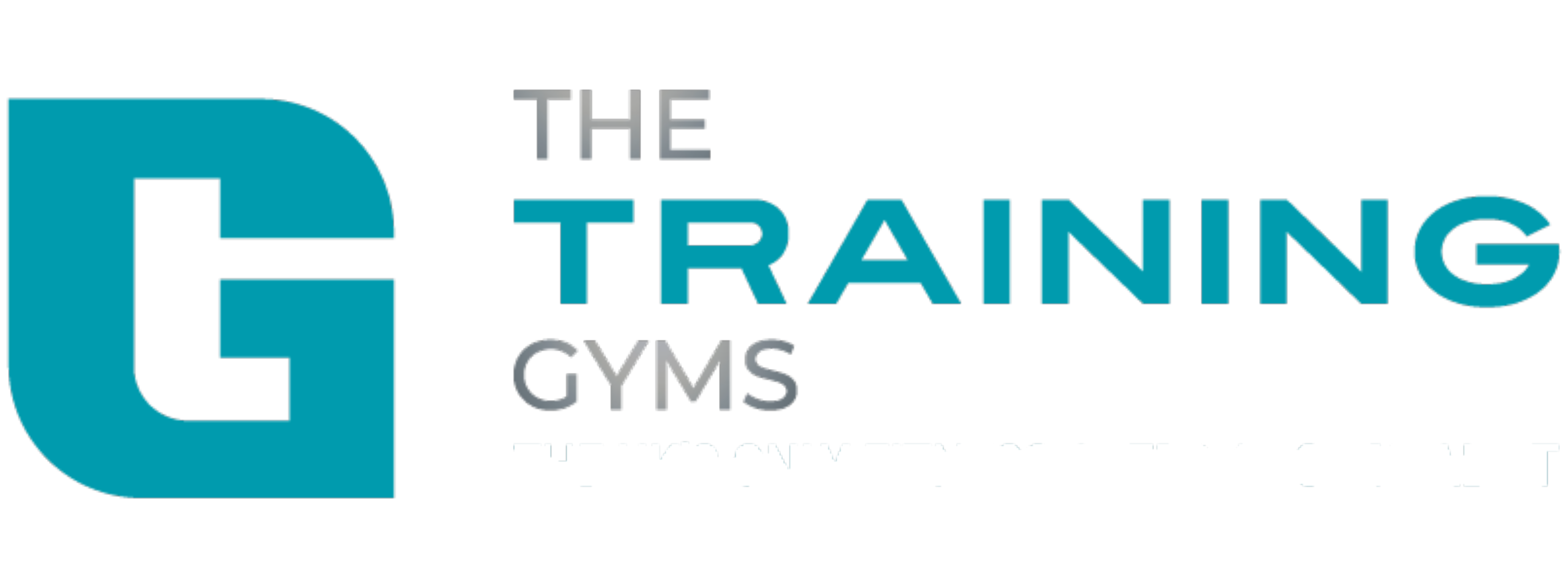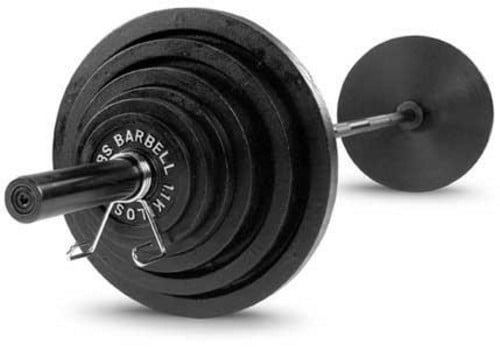Nathan: Hi, I’m Nathan from the DVCC and I’m here with Stephen Gray, one of the founders of the DVCC, for today’s podcast. We are going to be explaining or talking about why we don’t use Olympic barbells at the DVCC frequently. So, Stephen, how are you today?
Stephen: I’m great! How are you, Nathan?
 Nathan: I’m very well, thank you. So first of all, can you just tell me a little bit about why we don’t use Olympic barbells frequently?
Nathan: I’m very well, thank you. So first of all, can you just tell me a little bit about why we don’t use Olympic barbells frequently?
Stephen: I wanted to discuss this just because I have to travel around a lot, and when I’m travelling or whatever, I often go to other types of gyms or training environments and I see a lot of people using what are called Olympic barbells. An Olympic barbell is a 7-foot long barbell;
It’s a big barbell that is normally 20 kgs as standard without any weight on top of it and it is relatively thick, meaning it has to be held in a certain way.
I have seen a lot of people, who I personally from what I know or what I’ve learnt and different things like that, didn’t feel should be using that type of barbell, using them and using them an awful lot. If I go somewhere consistently I see them using them all the time and I just can see all the dangers and pitfalls of doing it, so I kind of…
...we don’t program that much; we use barbells occasionally, we use Olympic barbells very occasionally, we often will not use Olympic levels barbells because of the fact that they start at 20 kgs which is too much for most people, because it is very heavy; we don’t use them very much in our programming and there’s a reason for that.
So I just thought it would be worth discussing or going into some depth about why that is.
Nathan: Ok, so what are the main reasons why the DVCC tends to avoid using barbells in our programs?
Stephen: Well, obviously it forms part of modified lactic training process, which is the overall process that is basically how we get results at the DVCC centres.
One of my main issues with someone– we’re not talking Olympic level athletes, I’m not talking your above average person, I’m not talking about someone who’s trained all their lives; they’re a different type of person – I’m talking about the type of clientèle that come to our centres and the type of clientèle that I saw using the barbells, are someone whose main priority in life is not training, they don’t have the opportunity to be able to train 6 or 7 times a week, they don’t have people massaging them every day, they don’t have all of the nutrition backup and things like that, that a professional athlete has.
Often what happens, certainly with trainers and things like that, what happens is they end up prescribing things for clients that are useful for them personally, but not for the client. For example, the hand position when you hold a barbell has to be what we call internally rotated, with your palms facing the floor, just to hold the barbell. Obviously you’re holding the barbell that way, which is how most people would hold it 99% of the time.
 Now that internal rotation is how most people spend a lot of their life; when you sit at the computer, when you are sat at work, when you are sat in the car; you are sat with your hips up and your shoulders forward, so what happens is your chest becomes tight and then the back side of your shoulders becomes weak;
Now that internal rotation is how most people spend a lot of their life; when you sit at the computer, when you are sat at work, when you are sat in the car; you are sat with your hips up and your shoulders forward, so what happens is your chest becomes tight and then the back side of your shoulders becomes weak;
That is why a lot of people have shoulder issues but they also have lower back issues as well. For me, to put someone into that position with a weight is not the best thing for them to do, certainly not when it’s standard 20kgs as well.
I always look at training as the context of something, so yes, an Olympic barbell is a great tool for the right situation and, like I said, I think most people look at, say, an Olympic lifter or a professional athlete or someone that is able to train multiple, 6/7 times a week or has been training for 20, 15, 10 years – a long, long time.
They try and do what they do and that often causes injuries. I’ve seen a lot of people using these Olympic style barbells all the time and I just see their injuries happening because I can see where they are weak, where they are tight and what often happens with that tightness at that internal rotation, is people become weak as well.
So you’re then using these barbells, these weights, with weak positions, with weak areas of your body. There is a correlation between the over-use of a tool like an Olympic barbell and using it too much and injuring.
Nathan: Ok, and I am sure there are plenty of exercises you can do with dumbbells that you can simulate as you would do with a barbell; for example, a dumbbell snatch over a barbell snatch.
Stephen: Exactly right, so the thing with the barbell is it doesn’t move, if you think about it, with individual arms. Another side effect of everyday life is that you will find, I mean as our listeners would find, you have one side that is stronger than another.
The problem with an Olympic barbell is it’s a static long piece of piping essentially, which doesn’t allow you to be in different positions whether you’re tighter; say for example, I’m tighter than you, so my position – my hands, if I was trying to do a move – would have to be different, or should be different, because I’m just tighter.
So to try and put myself into a position compared to you would just put me at a higher risk of injury. With a dumbbell, you can move your hand position depending on your flexibility and things like that, so what I see a lot of people doing with these barbells is, to be able to do a move, putting themselves into a dangerous position.
Say, for example, if they are pressing above their head, they end up arching their back to do it, because it is the way the barbell is; whereas with a dumbbell you can move it to a different arc because obviously the barbell has to go up in front of your chin, you will see there’s a slight difference in the physical mechanics of it all.
Nathan: Ok, and what are the benefits of using barbells, if there are any?
 Stephen: I use barbells, we do use barbells within the modified lactic training process, but we just don’t over-use them. So they are a very great tool, you can use them effectively for fat loss; but it’s the over-use that I am talking about, rather than the actual use. They are a great tool, we have them.
Stephen: I use barbells, we do use barbells within the modified lactic training process, but we just don’t over-use them. So they are a very great tool, you can use them effectively for fat loss; but it’s the over-use that I am talking about, rather than the actual use. They are a great tool, we have them.
Nathan: So when you were talking earlier about the barbell that can affect your structural balance, is that one of the reasons why we try and stay away from using them more?
Stephen: Also, one thing to mention is we use lighter versions of barbells, because 20kgs is a substantial amount of weight, just as a basic. So, like I said, a lot of these things come from, and actually all of our training and all the processes in place at the DVCC that get great results, come from a really high Olympic level of learning.
However, you have got to be able to water it down or make it applicable to understanding what everyone is doing during the day. If you’re driving in a car for 6 hours in a day and then you’re going to work out, you are in a completely different position functionally than you are if you’re an athlete.
Nathan: And going back to what you said about having one side that is stronger than the other, we have just finished a phase called the DVCC unilateral correction training; can you just explain to me a little bit about why we’ve put our clients through that?
Stephen: Yes, because like I touched on already; most people, 99% of people, do have some form of bilateral deficit where one side is stronger than the other. I do; I have had injuries, rugby injuries – I know you have had a few things over the time – for example, one of my shoulders, I partially ruptured a supraspinatus tendon; that was years ago, playing rugby, but it does still affect me now.
So if I don’t take the time to try and stay ahead of that, I end up with an injury. Most people every day, if you think about it, you’re sitting down in a poor position for your posture, you’re doing things that aren’t very good for your body; so you need to take some time to try and correct those differences, this is what that phase is exactly designed to do.
We have put it in every 90 days I believe now, because it is just worth taking a couple of weeks to focus on single leg movements, one arm movements; ways where we are trying to work on your weaker arm or your weaker leg or your tighter side, to try and get closer to even. And it is hard because you’re doing things every day that make you uneven. But it’s a constant process.
Nathan: So let’s just round up on the DVCC stance and the reason why training with dumbbells is more optimal for strength gains and for fat loss than barbells.
Stephen: It’s the over-use and not understanding the effect that barbells can have on the body, which is why we tend to do more with dumbbells. Because it allows you to be able to put the weight in the optimal position for you; not trying to treat you as if everyone is the same level of flexibility and things like that. Also it’s the amount of weight that you are forced to use; 20kgs for 95% of people is a lot of weight on a barbell, with the types of moves that you have to do with that.
So it’s understanding that most people are not able to have a massage every day and do an hour of flexibility every day; which is where a lot of this stuff ends up coming from but is not being applied correctly to clientèle.
Nathan: Awesome! Well, thank you very much for your time, Stephen. I’m Nathan from the DVCC, have a good day!
Thanks for listening; head over to http://www.TheDVCC.com to leave a comment, or to find out how we can help you achieve your transformation.









